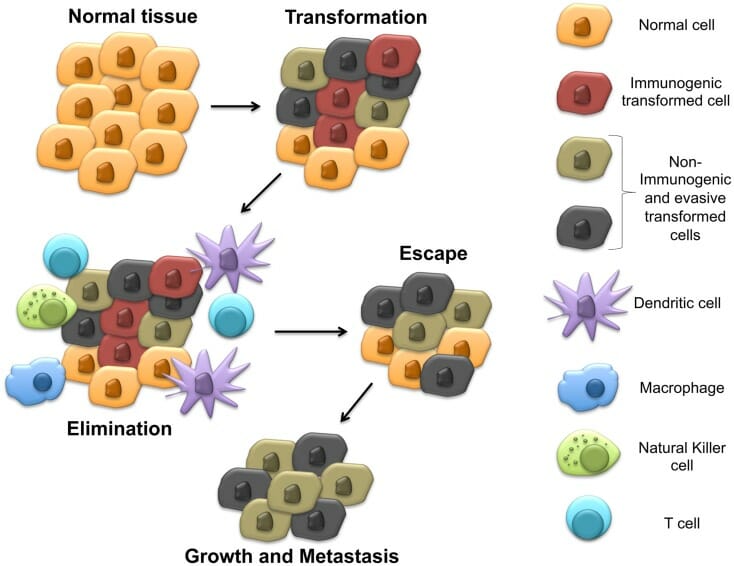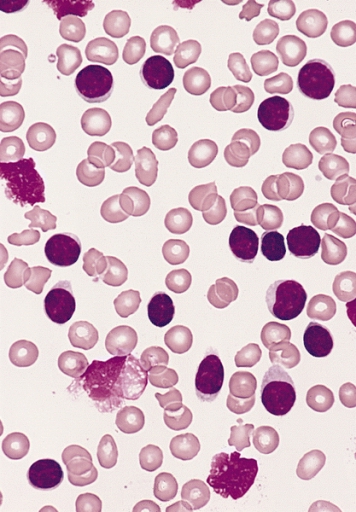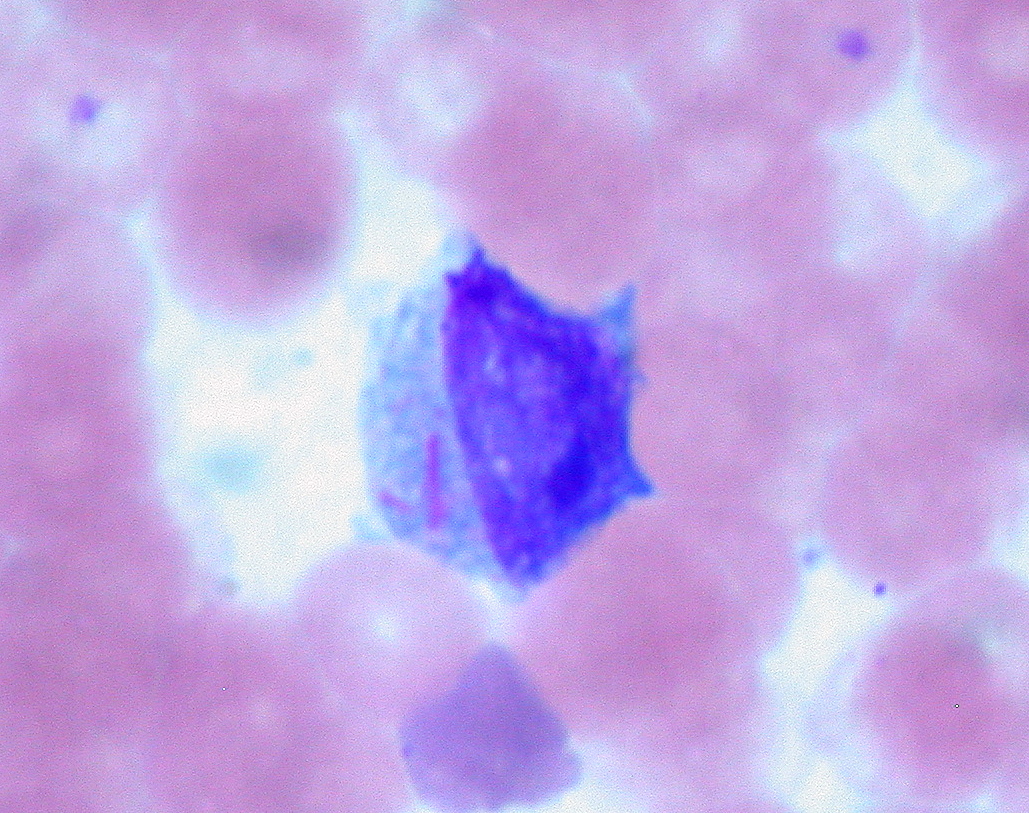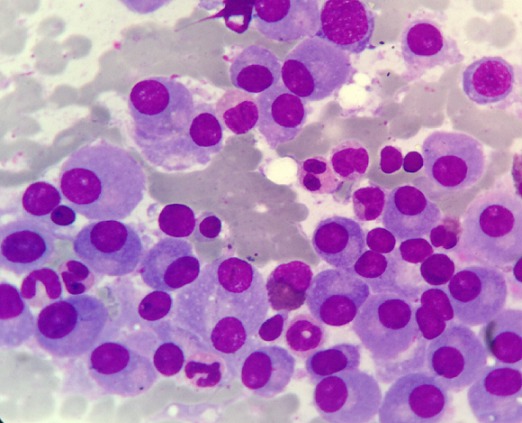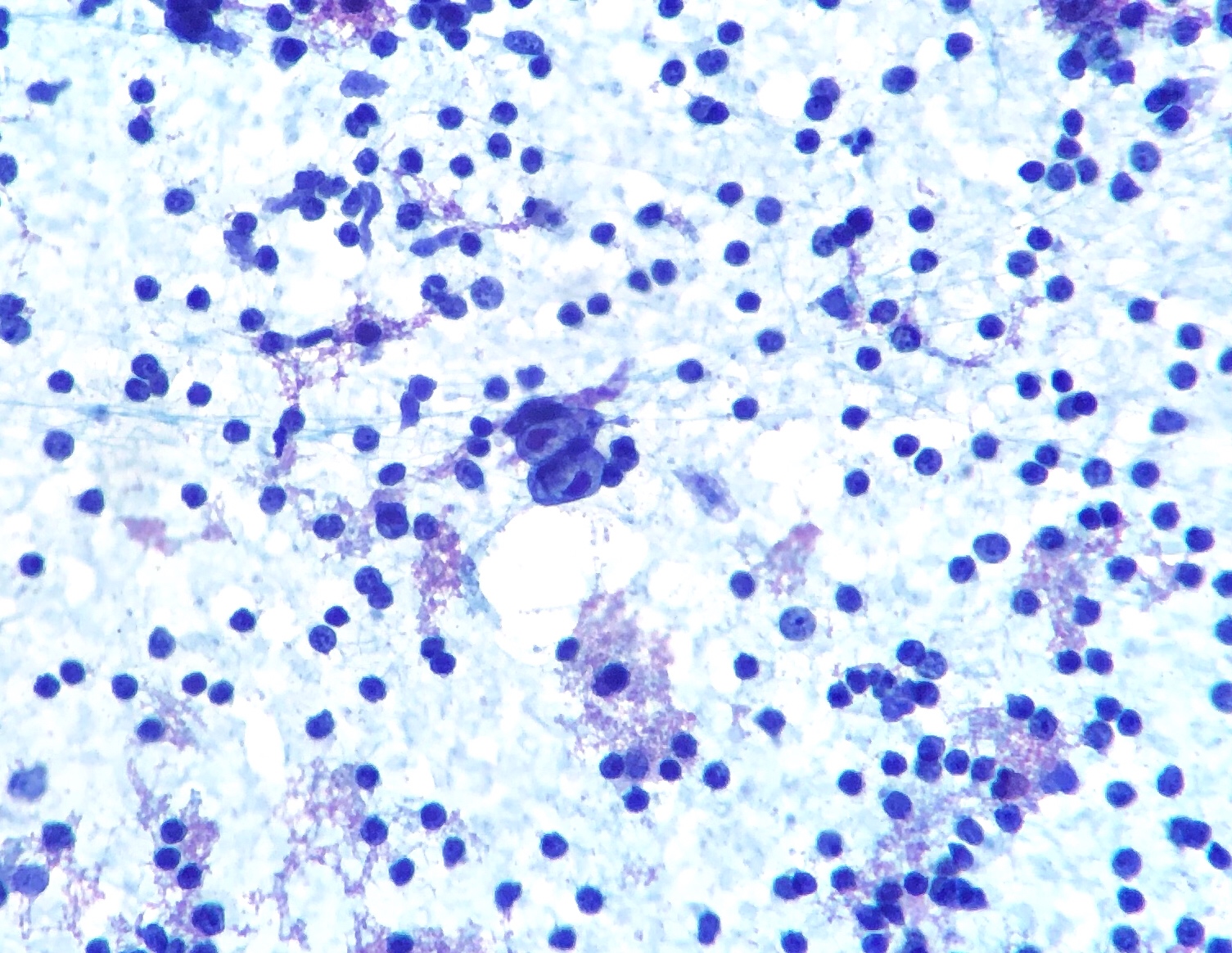Playlist
Show Playlist
Hide Playlist
Leukemia, Lymphoma & Myeloma
-
Slides Tumor Immunology.pdf
-
Download Lecture Overview
00:01 Let us look at tumors of the immune system. 00:04 Leukemia develops in the bone marrow. 00:07 There are a number of different types of leukemia. 00:11 The main ones are acute lymphoblastic leukemia, acute myeloid leukemia, chronic lymphocytic leukemia and chronic myeloid leukemia. 00:23 There are subtypes of each of these types of leukemia. 00:28 Lymphomas in contrast develop in the lymphatic system. 00:33 Two main lymphomas are Hodgkin lymphoma and Non-Hodgkin lymphoma. 00:41 Myelomas are tumors of plasma cells. 00:46 Here we have a stem cell that is giving rise to pre-B lymphocytes. 00:54 Acute lymphoblastic leukemia is usually derived from immature pre-B cells. 01:02 Blasts are present in the bone marrow and blood. 01:05 In chronic lymphocytic leukemia and lymphoma, the malignant population is mature B-cells. 01:14 In CLL, malignant cells are present in the blood. 01:18 In lymphoma, the malignant cells are present in the lymph node and sometimes in other tissues. 01:24 Plasma cells give rise to myeloma. 01:28 In myeloma, the clone of malignant plasma cells produces a monoclonal immunoglobulin; in other words, all the antibody is absolutely identical because it’s derived from a malignant clone of plasma cell. 01:45 T-cell malignancies are somewhat less common. 01:49 T-cells are not infected by Epstein-Barr virus, which is a major way in which B-cells can become malignant. 01:56 Also T-cells are somewhat more susceptible to apoptosis, and therefore less able to survive. 02:06 There are also myeloid leukemias derived from myeloid progenitors as well as these lymphoid leukemias that you can see on this slide. 02:17 Chronic lymphocytic leukemia is rather unusual, in that the leukemic cells have on their cell surface, a molecule that is normally present on B-cells, but also a molecule that is normally present on T-cells. 02:31 As you can see in this flow cytometry diagram, there are normally CD19+ B-cells, and then separately CD5+ T-cells. 02:45 However, in chronic lymphocytic leukemia, the cells express both of those molecules on their surface. 02:51 In other words, a molecule that is characteristic of B-cells, but also a molecule that is more normally characteristic of T-cells. 02:58 Post-transplant lymphoma can arise due to EBV infection in individuals that are receiving immunosuppression in order that they do not reject a transplanted tissue or organ. 03:14 Prior to a renal transplant, this woman had memory T-cells responding to Epstein-Barr virus. 03:21 The Epstein-Barr virus infection was controlled by the T-cells. 03:26 However following a transplant, the immunosuppressive drug cyclosporine has made the memory cells non-responsive. 03:35 And there is a polyclonal increase in EBV infected B-cells. 03:42 There becomes a situation in which there is uncontrolled EBV infection which drives B-cell proliferation. 03:55 The polyclonal B-cell proliferation will improve if the cyclosporine is stopped. 04:01 However with ongoing proliferation, Myc translocation can occur within the B-cells. 04:11 There is a malignant transformation resulting from this Myc translocation, and the development of lymphoma. 04:20 The polyclonal growth of B-cells has increased the risk for this translocation to occur. 04:26 The monoclonal B-cell proliferation will continue after cyclosporine is stopped, and the patient develops the symptoms of lymphoma. 04:38 In multiple myeloma, there are plasma cells in the bone marrow that become malignant. 04:47 And therefore, a clone of rapidly replicating plasma cells pumping out huge amounts of antibody of a single specificity develop. 05:00 They produce what is referred to as a paraprotein. 05:04 And this can be detected on a electrophoretic gel. 05:07 We can see the paraprotein band in the gamma region from the patient on this gel. 05:15 In contrast, in a healthy individual, that monoclonal band is missing because their antibodies are totally polyclonal; a very huge mixture of different specificities.
About the Lecture
The lecture Leukemia, Lymphoma & Myeloma by Peter Delves, PhD is from the course Tumor Immunology. It contains the following chapters:
- Tumors of the Immune System
- Chronic Lymphocytic Leukemia
- Post-Transplant Lymphoma
- Multiple Myeloma
Included Quiz Questions
Infection with which of the following pathogens is particularly associated with posttransplant lymphoma?
- Epstein–Barr virus
- Human papillomavirus
- Hepatitis C
- Varicella zoster virus
- Cytomegalovirus
Which of the following tumors is INCORRECTLY matched to the associated progenitor cells?
- Lymphoma - myeloid progenitors
- Leukemia - myeloid progenitors
- Leukemia - lymphoid progenitors
- Myeloma - plasma cell progenitors
- Lymphoma - lymphoid progenitors
A patient presents with large numbers of mature B cells in his serum. Which of the following is the most likely diagnosis?
- Chronic lymphocytic leukemia
- Acute lymphoblastic leukemia
- Non-Hodgkin's lymphoma
- Multiple myeloma
- Chronic myeloid leukemia
Which of the following best describes paraproteins?
- Monoclonal immunoglobulins or immunoglobulin fractions that are produced by a clonal population of B-cell lineage cells
- Polyclonal immunoglobulins or immunoglobulin fractions that are produced by a clonal population of B-cell lineage cells
- Polyclonal immunoglobulins or immunoglobulin fractions that are produced by a clonal population of T-cell lineage cells
- Monoclonal immunoglobulins or immunoglobulin fractions that are produced by a clonal population of T-cell lineage cells
- Polyclonal immunoglobulins or immunoglobulin fractions that are produced by a nonclonal population of B-cell lineage cells
Customer reviews
5,0 of 5 stars
| 5 Stars |
|
5 |
| 4 Stars |
|
0 |
| 3 Stars |
|
0 |
| 2 Stars |
|
0 |
| 1 Star |
|
0 |

